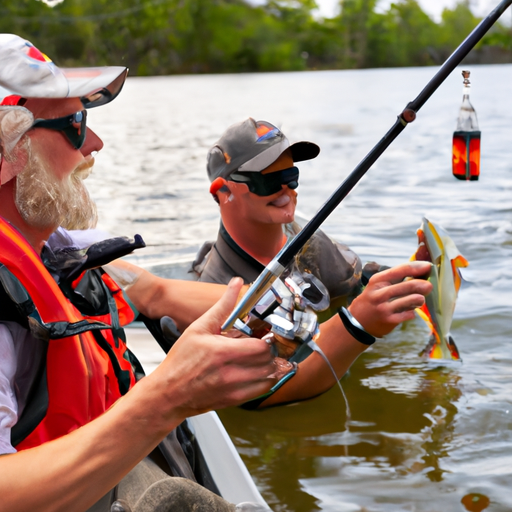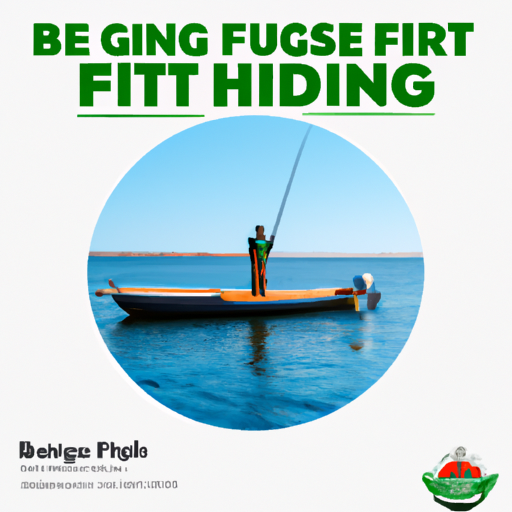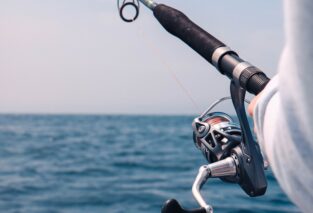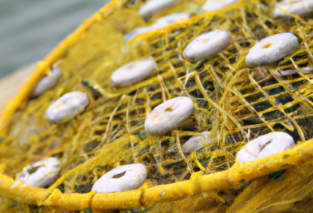Are you eager to start fishing but worried about the cost? Look no further! “Fishing On A Budget: Tips And Tricks For Beginners” is here to help you embark on your fishing journey without breaking the bank. Packed with practical advice and insider tips, this guide is designed to introduce novice anglers to the world of fishing without draining their wallet. From affordable gear recommendations to money-saving techniques, this comprehensive resource will ensure that you can enjoy the thrill of fishing on a budget. So, get ready to cast your line and reel in some unforgettable experiences!
Choosing the Right Fishing Rod
Consider your fishing style
The first step in choosing the right fishing rod is to consider your fishing style. Are you a beginner who wants to fish casually in freshwater lakes or rivers? Or are you an experienced angler who enjoys saltwater fishing or targeting larger species? Understanding your fishing style will help you determine the type of rod that will best suit your needs.
Determine your target species
Another important factor to consider when choosing a fishing rod is the target species you will be pursuing. Different species have different size and strength requirements, so it’s crucial to select a rod that can handle the weight and fight of your intended catch. For example, if you plan on fishing for smaller freshwater trout, a lightweight spinning rod will be sufficient. However, if you’re planning to go after larger saltwater fish like marlin or tuna, a heavy-duty offshore rod will be necessary.
Research different rod materials
Fishing rods are made from various materials, each with its own unique properties and advantages. Common rod materials include fiberglass, graphite, and carbon fiber. Fiberglass rods are known for their durability and affordability, making them a popular choice for beginners. Graphite rods, on the other hand, are lighter and more sensitive, making them ideal for anglers who prefer finesse techniques or require greater casting distance. Carbon fiber rods offer a combination of strength, sensitivity, and lightness, but they can also be more expensive.
Find the appropriate length and action
The length and action of a fishing rod are two important considerations that can greatly affect your fishing experience. The length of a rod determines the casting distance and control, with longer rods typically offering greater casting distance. However, shorter rods provide more precision and control in tight fishing spots. The action refers to how much the rod bends when pressure is applied. Fast action rods bend primarily at the tip, which makes them more sensitive and ideal for quick hook sets. Medium or slow action rods bend more throughout the body, providing a more forgiving and flexible fishing experience.
Selecting the Right Fishing Reel
Explore different reel types
Once you have chosen the appropriate fishing rod, it’s time to select the right fishing reel to pair with it. There are several types of fishing reels to consider, including spinning reels, baitcasting reels, and spincasting reels. Spinning reels are popular among beginners due to their ease of use and versatility. Baitcasting reels, on the other hand, provide greater control and casting accuracy, making them a favorite among experienced anglers. Spincasting reels offer a simpler design and are best suited for light to medium freshwater fishing.
Consider the reel’s gear ratio
The gear ratio of a fishing reel refers to the number of times the spool rotates for each turn of the handle. A higher gear ratio means faster retrieval, while a lower gear ratio provides more power for reeling in larger and stronger fish. When selecting a reel, consider the type of fishing you plan to do and the species you will be targeting. If you’re planning to fish for fast-swimming species like bass or pike, a reel with a higher gear ratio will be beneficial. However, if you’re targeting bottom-dwelling species like catfish or carp, a reel with a lower gear ratio may be more suitable.
Check the drag system
The drag system on a fishing reel is responsible for applying pressure to the line, allowing it to be pulled out smoothly when a fish is fighting. It is essential to have a reliable and smooth drag system to prevent line breaks and tire out strong fish. When choosing a reel, check the quality and adjustability of the drag system. A good drag system will be able to provide a consistent and gradual increase in pressure as the fish pulls, preventing sudden line breaks and giving you a better chance at landing your catch.
Evaluate the reel’s durability and reliability
Fishing reels can range in price and quality, so it’s important to consider the durability and reliability of the reel you choose. Look for reels made from corrosion-resistant materials to ensure they can withstand exposure to saltwater or harsh weather conditions. Additionally, read reviews or seek recommendations from experienced anglers to gauge the reliability of a particular brand or model. A durable and reliable reel will last longer and provide a better overall fishing experience.

Understanding Fishing Lines
Learn about monofilament lines
Monofilament lines are a popular choice for many anglers due to their versatility and affordability. These lines are made from a single strand of nylon or other synthetic materials, making them easy to handle and tie knots. Monofilament lines also offer good knot strength, have low visibility in the water, and provide decent shock absorption when fighting fish. However, they are more susceptible to wear and can weaken over time with exposure to sunlight and water.
Consider fluorocarbon lines for invisibility
Fluorocarbon lines have gained popularity in recent years due to their near-invisibility in water. Unlike monofilament lines, fluorocarbon lines are made from a denser material that refracts light similarly to water, making them almost invisible to fish. These lines are ideal for clear or heavily fished waters where fish may be more cautious. Fluorocarbon lines also have additional benefits such as low stretch, high abrasion resistance, and excellent sensitivity. However, it is important to note that fluorocarbon lines can be more expensive compared to monofilament.
Explore braided lines for strength
Braided lines are known for their exceptional strength and durability. These lines are made by weaving together several synthetic fibers, such as Spectra or Dyneema, to create a thin but incredibly strong line. Braided lines offer minimal stretch, high sensitivity, and excellent knot strength. They are especially popular among anglers targeting large or hard-fighting species, as the lack of stretch allows for better hook sets and greater control over the fish. However, braided lines have high visibility in the water and can be more prone to wind knots.
Understand line weight and thickness
When selecting a fishing line, it’s important to consider the appropriate line weight and thickness for your target species and fishing conditions. Line weight is typically indicated on the fishing rod and reel to provide a range of suitable line weights. Choosing the right line weight will ensure that your line is strong enough to handle the weight and fight of the fish you’re targeting. Additionally, the line thickness, or diameter, can affect casting distance and sensitivity. Thinner lines offer greater sensitivity and casting distance, but they may be more susceptible to breaking under heavy loads.
Choosing the Right Fishing Hooks
Determine the hook size for your target fish
Choosing the right hook size is crucial to ensure a successful hook set and landing of your target fish. Hook sizes are indicated by numbers, with larger numbers representing smaller hooks and vice versa. It’s important to match the hook size to the size of your target fish’s mouth. Using a hook that is too large may result in missed bites, while using a hook that is too small may lead to inadequate hook penetration or even hook straightening. Reference hook size charts or consult local tackle shops for guidance on the appropriate hook sizes for different species.
Explore different hook shapes and designs
Hooks come in various shapes and designs, each intended for different fishing techniques and bait presentations. Common hook shapes include the J-hook, circle hook, and treble hook. J-hooks are versatile and suitable for a wide range of fishing applications. Circle hooks are designed to hook fish in the corner of the mouth, making them ideal for catch-and-release fishing. Treble hooks consist of three hooks attached to a single shank and are commonly used on artificial lures. Understanding the different hook shapes and designs will allow you to choose the most suitable option for your fishing needs.
Consider barbless hooks for catch-and-release
Catch-and-release fishing has become increasingly popular as anglers strive to protect fish populations and promote sustainability. When practicing catch-and-release, it is beneficial to use barbless hooks. Barbless hooks are designed without the small barb on the shank, making it easier to remove the hook and minimize injury to the fish. While barbless hooks may result in a slightly higher chance of the fish shaking free, they greatly reduce the risk of deep hooking or causing unnecessary harm to the fish. Many fisheries and regulations also require the use of barbless hooks when practicing catch-and-release.
Evaluate the hook’s strength and durability
The strength and durability of a fishing hook are crucial factors to consider, especially when targeting larger or stronger fish. Hooks are typically made from high-carbon steel, which offers strength and resistance to bending. When selecting hooks, consider the gauge or thickness of the wire. Thicker wire hooks are generally stronger but may be less suitable for delicate presentations. Additionally, examine the sharpness of the hook’s point. A sharp hook will penetrate more easily and hold better, increasing your chances of a successful hook set. Hooks with chemically sharpened points or specialized coatings are often preferred for their increased sharpness and durability.

Learning Different Fishing Knots
Master the improved clinch knot
The improved clinch knot is one of the most commonly used fishing knots and is ideal for attaching hooks, lures, and swivels to your fishing line. To tie this knot, thread the line through the eye of the hook, lure, or swivel. Then, make five to seven wraps around the mainline, passing the tag end through the loop near the eye of the hook. Moisten the knot and tighten it by pulling both ends of the line. Trim any excess tag end for a neat finish. The improved clinch knot provides a strong and reliable connection, ensuring that your tackle stays securely attached during the fight with a fish.
Learn the Palomar knot for added strength
The Palomar knot is another popular fishing knot known for its strength and simplicity. This knot is particularly effective for tying hooks or lures directly to your fishing line. To tie the Palomar knot, double about six inches of the line and pass it through the eye of the hook. Tie a simple overhand knot with the doubled line, then pass the loop over the hook or lure. Moisten the knot and slowly pull both ends of the line to tighten. Trim any excess tag end. The Palomar knot provides excellent strength and is capable of maintaining close to 100% of the line’s breaking strength.
Practice tying the loop knot for lures
The loop knot is a versatile knot that allows for greater lure movement in the water, making it a favorite among anglers using artificial lures. This knot creates a loop at the end of the line, allowing the lure to move more freely and naturally. To tie the loop knot, create a small loop in the line, about four to six inches from the end. Pass the tag end through the loop, making sure the tag end is on the same side as the mainline. Wrap the tag end around the loop three to five times, then pass it back through the loop. Moisten the knot and tighten it by pulling both ends of the line. Trim any excess tag end for a clean finish.
Understand the uni knot for line-to-line connections
The uni knot is a versatile knot that can be used for various applications, including line-to-line connections and attaching terminal tackle. To tie the uni knot, overlap the ends of the lines you wish to connect, leaving a sufficient tag end. Take the tag end and make several wraps around both lines, working away from the direction of the tag end. Pass the tag end through the loop formed by the wraps, moisten the knot, and slowly tighten by pulling both ends of the line. Trim any excess tag end. The uni knot provides a strong and reliable connection between lines of similar or different diameters.
Choosing the Right Bait and Lures
Consider live bait for versatility
One of the most versatile choices for bait is live bait. Live bait includes worms, minnows, shrimp, and various other aquatic creatures that fish naturally feed on. Live bait can be particularly effective when fishing in freshwater or saltwater environments and can attract a wide range of species. Using live bait requires proper handling and storage to keep it alive and enticing to fish. Live bait can be purchased from local bait shops or collected yourself, depending on local regulations. When choosing live bait, consider the preferences of the fish species you are targeting and the conditions in which you will be fishing.
Explore artificial lures for specific species
Artificial lures are another popular option that can be tailored to specific species and fishing techniques. These lures mimic the appearance and movement of natural prey and can attract fish even in the absence of live bait. Artificial lures come in various shapes, sizes, colors, and styles, each designed for different fishing conditions and target species. Some common types of artificial lures include crankbaits, soft plastics, spoons, and spinnerbaits. When selecting artificial lures, consider the water clarity, depth, and the behavior of the fish species you are targeting to choose the most effective lure.
Learn about different types of lures
To effectively use artificial lures, it’s important to understand the different types and how they can be used to entice fish. Crankbaits are hard-bodied lures with a diving lip that creates a wobbling action when retrieved through the water. Soft plastics are made from flexible materials and can mimic various prey, such as worms, minnows, or crawfish. These lures are available in different shapes and sizes and can be rigged on hooks or jig heads. Spoons are metal lures shaped like a spoon and are designed to flutter or flash when retrieved. Spinnerbaits consist of a metal blade or blades that rotate around a wire frame, creating vibration and flash to attract fish.
Research local bait preferences
When planning a fishing trip, it’s beneficial to research the local bait preferences for the species you intend to target. Different fish species have varied diets and may be more attracted to certain baits over others. Local tackle shops, fishing guides, or online resources can provide valuable insight into the best bait options for specific areas and seasons. Additionally, observing the local ecosystem and paying attention to the natural prey present can give you a clue as to the types of bait that may be most effective. Remember to always follow local fishing regulations and obtain any necessary permits or licenses when using live bait.
Understanding Fishing Regulations
Familiarize yourself with fishing licenses
Before embarking on a fishing trip, it is important to ensure that you are in compliance with all applicable fishing regulations, including obtaining the necessary licenses or permits. Fishing licenses are typically required for individuals aged 16 and older and can be obtained from the relevant state or provincial fishing authority. Licenses are available for different durations, ranging from one-day licenses to annual licenses. Additionally, some areas may have specific licenses or stamps required for fishing certain species or in certain locations. Familiarize yourself with the regulations of the area you plan to fish and obtain the appropriate licenses to avoid any legal issues.
Research bag and size limits
Bag and size limits are regulations implemented to protect fish populations and ensure sustainable fishing practices. Bag limits refer to the number of fish an angler is allowed to harvest within a specified period, whether it be daily, weekly, or for a season. Size limits, on the other hand, dictate the minimum or maximum size of fish that can be retained. These regulations aim to protect juvenile fish from overfishing and allow fish to reach maturity and reproduce. Research the bag and size limits for the species you plan to target and adhere to these regulations to contribute to the conservation and preservation of fish populations.
Know the fishing seasons and closures
Fishing seasons and closures are designed to protect fish during critical periods of their lifecycle and promote sustainable fishing practices. Some fish species have specific seasons during which fishing is permitted, while others may have closed seasons during which fishing is prohibited altogether. Closed seasons usually coincide with spawning or migration periods to prevent disruptions to the fish populations. It is essential to stay informed about the fishing seasons and closures in your area, as these regulations can change from year to year. Consult fishing guides, online resources, or local fishing authorities to stay up to date on any seasonal restrictions.
Understand catch-and-release guidelines
Catch-and-release fishing is a popular practice that allows anglers to enjoy the sport of fishing while minimizing harm to fish populations. When practicing catch-and-release, it is important to handle fish properly to increase their chances of survival after being released. Guidelines for catch-and-release fishing include using barbless hooks, minimizing the time the fish is out of the water, and avoiding the use of excessive force during hook removal. Handling fish with wet hands or using a landing net can help reduce damage to their protective slime coat. Understanding and following catch-and-release guidelines will help ensure the sustainability of fish populations for future generations of anglers.
Learning Basic Casting Techniques
Master the overhead cast
The overhead cast is one of the most fundamental and widely used casting techniques in fishing. To perform an overhead cast, start by gripping the fishing rod with one hand near the reel and the other hand gripping the rod near the base of the handle. Hold the fishing line with your index finger against the rod. Swing the rod backward in a smooth and controlled motion, allowing the fishing line to extend behind you. As the rod reaches its maximum backward position, snap it forward while simultaneously releasing the line with your index finger. The line will unspool and carry your bait or lure towards the target area. Practice this casting technique to improve your casting accuracy and distance.
Practice the sidearm cast
The sidearm cast is useful when fishing in areas with low cover, such as under overhanging trees or docks. To perform a sidearm cast, imagine the motion of skipping a stone on the water. Start with your fishing rod parallel to the ground, holding the rod with one hand near the reel and the other near the base of the handle. Keep your elbow close to your body, and with a fluid motion, swing the rod forward while releasing the line with your index finger. The sidearm cast allows you to deliver your bait or lure under low-hanging obstacles while maintaining accuracy and control.
Learn how to roll cast
The roll cast is a casting technique used for fishing in tight spaces or when there is limited room for a backcast. To perform a roll cast, start with the rod tip close to the water’s surface and the line extended straight out in front of you. Using a slight flick of the wrist, lift the rod tip and the line off the water to load the rod. With a smooth and controlled motion, rotate your arm forward and bring the rod tip back to its original position, propelling the line forward onto the water’s surface. The roll cast allows you to cast your bait or lure with precision in areas where traditional casting techniques may be challenging.
Understand the flipping and pitching techniques
The flipping and pitching techniques are specialized casting techniques used for accurately delivering baits or lures with pinpoint accuracy. These techniques are commonly used in bass fishing when targeting fish hiding under vegetation, docks, or other cover. To perform the flipping technique, release the line with your free hand and allow it to drop freely to the ground. Gently lift the rod to bring the bait or lure off the ground, then use your wrist or forearm to swing the bait towards the target area. The pitching technique involves a similar motion but with a more controlled and underhanded cast towards the target. Practice these techniques to improve your ability to cast accurately in tight fishing spots.
Finding Budget-Friendly Fishing Spots
Research local fishing spots
Finding budget-friendly fishing spots doesn’t mean compromising on the quality of your fishing experience. Many areas offer fantastic fishing opportunities that won’t break the bank. Start by researching local fishing spots in your area or the region you wish to visit. Online resources, fishing forums, or local angling communities can provide information on accessible and productive fishing locations. Look for spots that are easily accessible and offer a variety of fish species to target. Familiarize yourself with any specific rules or regulations that may apply to these fishing spots to ensure you are fishing legally and responsibly.
Explore public fishing access areas
Public fishing access areas, such as lakes, rivers, or coastlines, often provide budget-friendly fishing options. These areas are typically accessible to the public and may have designated fishing piers, docks, or shoreline access points. Public fishing access areas may also have facilities such as picnic areas, restrooms, and parking, making them suitable for day trips or extended fishing outings. Check with local parks and recreation departments or fish and wildlife agencies for information on nearby public fishing access areas. These spots can be great options for anglers looking to fish on a budget while still having access to quality fishing opportunities.
Consider fishing from piers or jetties
Fishing from piers or jetties can be an economical way to enjoy saltwater or freshwater fishing. Piers and jetties provide accessible fishing platforms that extend into the water, allowing anglers to reach deeper or more productive fishing areas without needing a boat. Some piers or jetties may have minimal or no fishing fees, making them a budget-friendly option. These structures often attract a variety of fish species that utilize them for shelter, foraging, or spawning. Be sure to familiarize yourself with any specific rules or regulations regarding fishing from piers or jetties to ensure compliance with local regulations.
Look for free or low-cost fishing events
Many fishing clubs, organizations, and local government agencies host free or low-cost fishing events throughout the year. These events may include fishing clinics, derbies, or tournaments, and provide opportunities for anglers of all skill levels to enjoy fishing without breaking the bank. These events often provide loaner fishing equipment, bait, and instruction, making them ideal for beginners or those who may not have access to their own gear. Check local event calendars, community bulletin boards, or online resources to find out about upcoming fishing events in your area. Attending these events can not only be a cost-effective way to fish but also a great way to connect with other anglers and learn new techniques.
Maintaining Fishing Gear on a Budget
Clean and maintain your fishing rod and reel
Proper maintenance and care of your fishing gear can help extend its lifespan and ensure optimal performance. After each fishing trip, rinse your fishing rod and reel with freshwater to remove any salt or debris. Use a soft cloth or brush to wipe away any dirt or grime and inspect for any signs of wear or damage. Store your fishing rod and reel in a dry and secure location, protecting them from moisture or extreme temperatures. Regularly check and tighten any loose screws or fittings on your reel, as these can affect its performance. By regularly cleaning and maintaining your fishing gear, you can avoid costly repairs or replacements in the future.
Replace worn-out fishing lines
Fishing lines can become worn or damaged over time due to exposure to sunlight, repetitive casting, or contact with rough surfaces. Regularly inspect your fishing lines for any signs of fraying, nicks, or abrasions. If you notice any damage, it is advisable to replace the affected sections or the entire line. Replacing worn-out fishing lines is a cost-effective way to ensure the reliability and strength of your tackle. Additionally, consider replacing your fishing lines at the beginning of each fishing season to start with fresh and reliable lines.
Use inexpensive line conditioner
Line conditioner is a cost-effective product that can help extend the life and performance of your fishing lines. Line conditioner is designed to moisturize and protect fishing lines, reducing friction and increasing casting distance. Applying a line conditioner to your fishing lines before each fishing trip can help prevent premature wear and prolong the life of the lines. Line conditioner is available in various brands and formulations, so choose one that suits your preferences and budget. A small investment in line conditioner can result in improved casting performance and fewer line breakages, ultimately saving you money in the long run.
Properly store your fishing gear to prolong its lifespan
Proper storage of your fishing gear is essential to maintain its lifespan and protect it from damage. After each fishing trip, ensure that your fishing rod and reel are dry and free from moisture to prevent corrosion. Use rod holders or racks to store your fishing rods in an upright position to avoid bending or warping. Store your fishing reels in reel covers or protective cases to shield them from dust or accidental damage. Keep your fishing tackle organized in tackle boxes or bags, ensuring that hooks, lures, and other accessories are properly secured. By taking a few simple steps to store your fishing gear correctly, you can prevent unnecessary wear and tear and prolong the life of your equipment.
In conclusion, choosing the right fishing gear and understanding the various techniques and regulations can greatly enhance your fishing experience. Consider your fishing style, target species, and the different materials and features of fishing gear before making a selection. Learn and practice different fishing knots and casting techniques to improve your accuracy and control. Research budget-friendly fishing spots and take advantage of free or low-cost fishing events to enjoy fishing without breaking the bank. Lastly, maintain and store your fishing gear properly to ensure its longevity and optimal performance. With these tips and tricks, you can have an enjoyable and budget-friendly fishing experience as a beginner angler.





